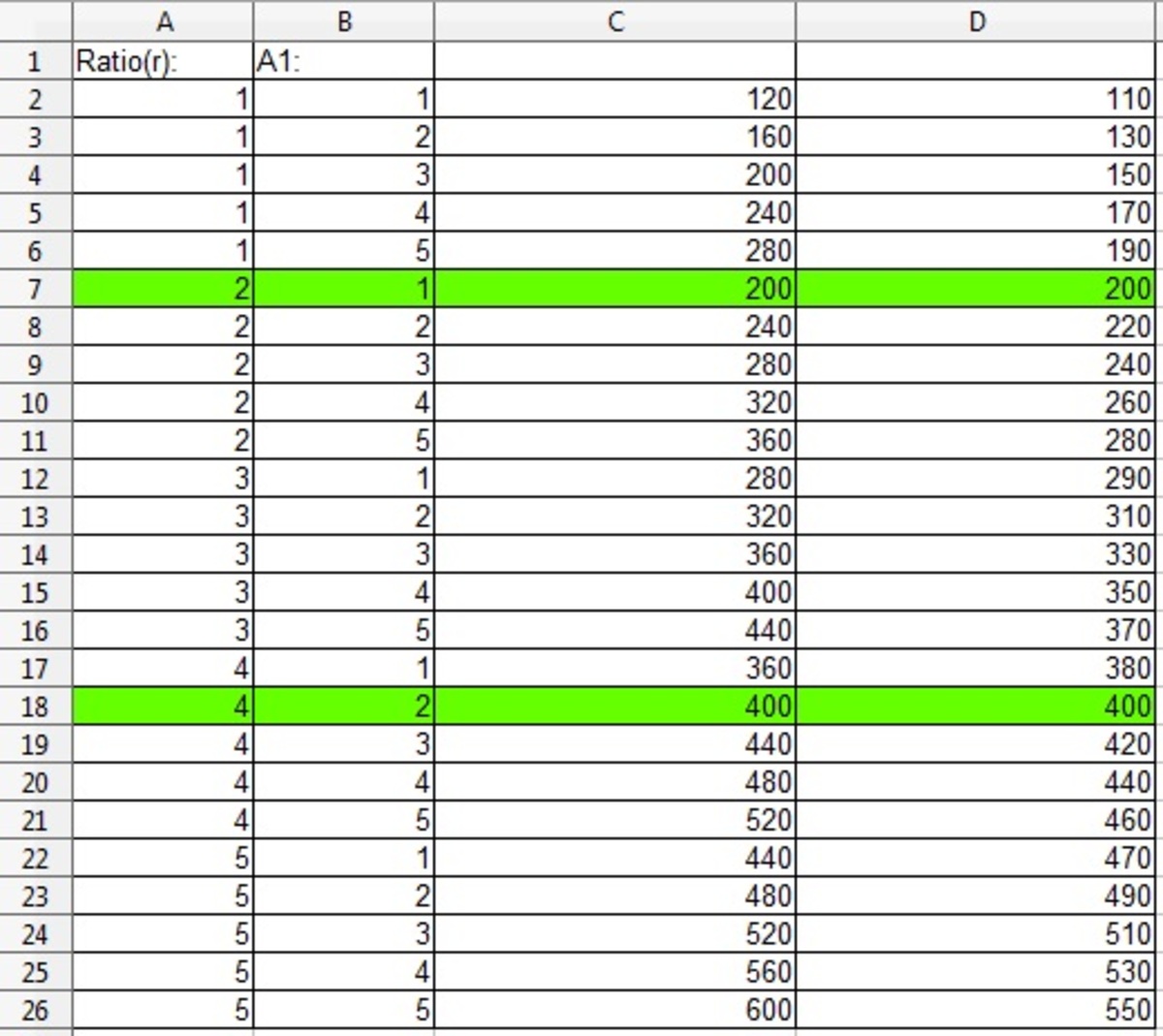Pattern Problems!
The sum of the first ten terms of an arithmetic sequence is four times the sum of the first five terms of the sequence. What is the ratio of the first term to the second term? (Express your your answer as a ratio in decimal form rounded to the nearest thousandth.)
The answer is 0.333.
This section requires Javascript.
You are seeing this because something didn't load right. We suggest you, (a) try
refreshing the page, (b) enabling javascript if it is disabled on your browser and,
finally, (c)
loading the
non-javascript version of this page
. We're sorry about the hassle.
3 solutions
For calculate the ratio between the first and the second terms, we need to discover the first term and the ratio of the Arithmetic Progression.
According to the informations:
( A 1 + A 5 ) × 5 × 4 ) = ( A 1 + A 1 0 ) × 1 0 ( A 1 + A 5 ) × 2 0 = ( A 1 + A 1 0 ) × 1 0
Below, there are the values which satisfy the equation

Through the spreadsheet, we discover the values A 1 = 1 o r 2 , and the A . P r a t i o = 2 o r 4
Then, the answer is get by A 2 A 1 , such that we use either A 1 = 1 and A . P r a t i o = 2 or A 1 = 2 and A . P r a t i o = 4 .
Using the values 1 and 2 , calculate the ratio:
A 2 A 1 = A 1 + r 1 = 1 + 2 1 = ≈ 0 . 3 3 3
Ratio? Arithmetic progressions have a constant difference, not a constant ratio.
From S10 = 4S5, we have 5(2a+9d) = 10(2a+4d), where a is the first term, and d is the difference.From that equation we have d=2a. So the ratio of a/(a+d) = 1/3 or 0.333
The first ten terms of any arithmetic sequence is as follows: x, x+d, x+2d, x+3d, x+4d, x+5d, x+6d, x+7d, x+8d, x+9d
The sum of all of these is : 10x+45d The sum of the first five terms is: 5x+10d
The equation goes as follows: 10x + 45d = 4 ( 5x + 10d ) 10x + 45d = 20x + 40d 10x = 5d x = d/2
The ratio of the first term to the second term is : x / x+d When d/2 is substituted in for x, the ratio is : ( d/2 ) / [(d/2) + d]
The simplification goes as follows: ( d/2 ) / [(d/2) + d] ( d/2 ) / (3d / 2) d / 3d 1 / 3
Because the answer is to be given in decimal form, the answer is 0.333.